Dover sits in an area of Kent called the Isle of Thanet; it's called an isle because many centuries ago it was cut off from the rest of the country by rivers and marshes. From near our new home in St Margarets I can see the coast of Kent from Dover up to Ramsgate and then it turns east along to Whitstable and Margate. It seems that we are almost surrounded by water, but that is just an illusion of course.From dover to Ramsgate there are chalky cliffs for the most part, and indeed running south to Folkestone too. And even on the other side of the channel there are similar cliffs there too. Of course, Dover's cliffs are famous for being the subject of the wartime song by Vera Lynn; sadly the bluebirds are artistic licence, but when the light is right and the breeze not too strong, it is a wonderful place.
Dover is iconic; it is just not the gateway to Britian, or was before the days of Heathrow, seeing those white cliffs from across the channel meant that you would soon be home, or at least in Blighty.
And now I live here; or rather we do. As a photographer it is a delight, as there is always something going on, or something new to photograph. And so with this in mind, a couple of days ago I set out on a longish walk from the flat almost all the way to St Margarets and back again. I'm not sure how many miles it is, but it's a good way, and took about two and a half hours each way.The walk into town was its usual depressing self; Dover has suffered as many other towns have not just with the recent downturn, but in the past two decades of depression, as the prosperity that comes off the ferries passes the town right by and heads up to London via the M20 or M2. Rows of empty of down at heel shops, and the proliferation of charity shops and the re-emergance of pawnbrokers, or their modern rebranding equivilants.
Towering over the town on the end of one row of cliffs is the castle. I could write for ages about it's history and it's beauty. For nearly two millennia there has been a castle of fortification on the site. There is the only surviving Roman lighthouse, mostly still intact on th site; Henry VIII slept there, as did many kings; in Napolionic times tunnels were dug into the chalk, and these still exist, and were put to use during WW2.
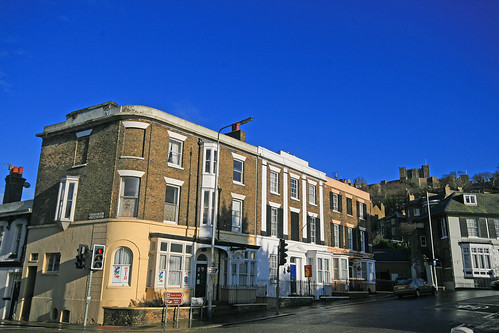
But, for the most part, it just sits there looking just wonderful. Lesser known is a series of just impressive defences built the other side of the town, Western Heights made of tens of millions of bricks as well as tunnels into the cliffs, and this is invisiable from the sea or from France. Boney watch out!
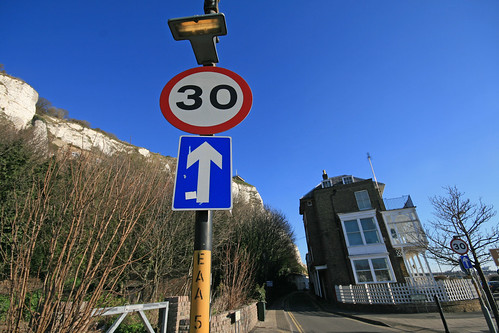
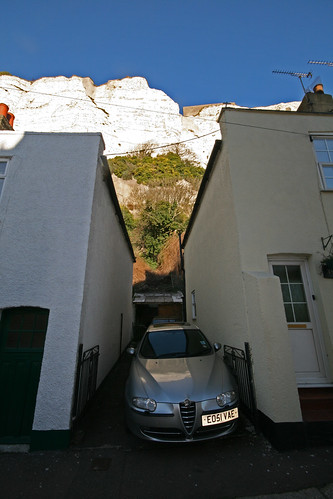
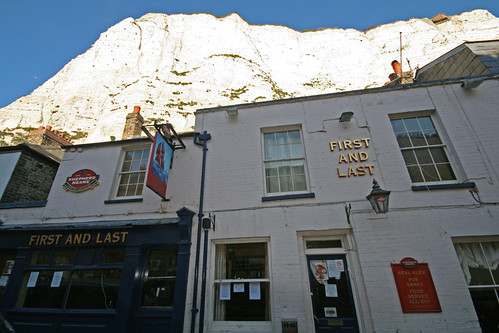
From the foot of the cliff at the end of Castle Street, I walk down to the main road along where the prom used to be, before heading up a narrow lane called East Cliff; built under the shadow of the huge walk of chalk behind, a row of small terraced houses on one side, and the backs of grander villas on the other. Aslo, the site of the first pub in England for those getting off the ferry, the aptly named First and Last. But I make my way past these and along a posher row of houses to where a narow footpath begins, and begins to climb.
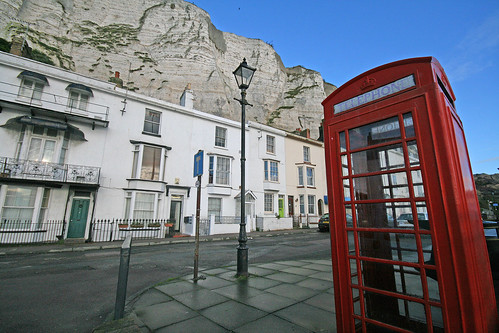
Under the A2 as it sweeps down to te harbour from the cliffs in the graceful curve of Jubilee Way, and then the climb gets hard as the path rises to get to the top of the cliff about two hundred or so feet above. The views behind open up of the harbour and further alng to Shakespeare Cliff, the unfit can pause at regular intivals to claim to be admiring the view.

The path then follows the top of the cliffs until it comes to the national Trust site, which manages the whole stretch of the coastline to St Margarets for the nation. There are a number of paths to choose from, the easy of those best suited to mountain goats. I choose an easy one after nearly sliding off down a muddy slope and thinking safety first. Down below, the ferry port and harbour carries out its work, with the occasional announcemnt over the tannoys reaching us high above on the cliffs.
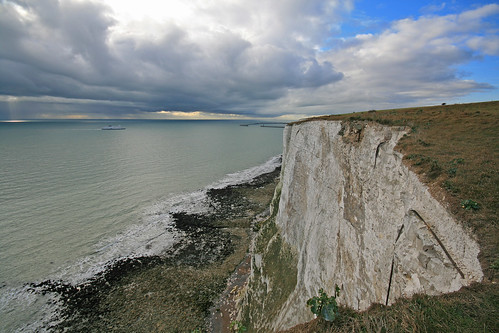
But, after a while, after the walker passes the easern most part of the docks, the hustle and bustle is left behind, and it all becomes calm. To one side there is the rising grass land to fields just recently ploughed, and to the right the cliffs plungs down to the sea below; all is quiet apart from the wind and a few curious seabirds. France is out of sight through a haze and gathering stormclouds, but the ferries can still be seen as they head into the rain.
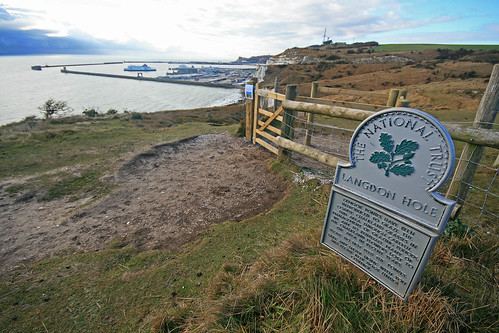
Being a weekeday in winter, there are no others joining me, and I can take my time, framing shots for my collection, and just thinking how darn lucky I am. Sometimes the path has to go inland some way, as the cliffs have partially collapsed, but the granduer and scale of the place is just wonderful. The winter sun is low in the sky, but the light catches the cliffs, making them dazzelingly white, making the grass seem a richer darker colour in contrast.
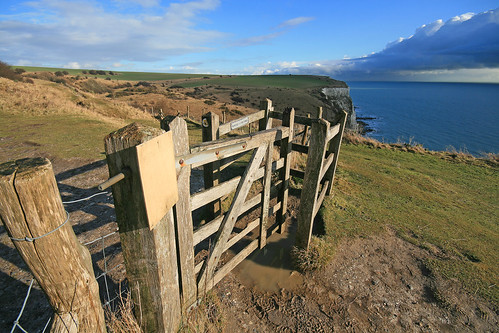
My destination is the Soth Foreland Lighthouse, a major landmark of the area, and the frst light in the world to be powered by electrickery, and where Marconi did early tests with radio. By this point I am nearly in St Margarets, and there are paths that go inland to the village, but as we have not yet moved there, my path is back, and to the First and Last where, hopefully, a pint of frothy ale will be bought and my legs refreshed.

Sadly, the pub is closed until early evening, and so my legs carry me to the town centre, past the dreadful Weatherspoons but on to the Prince Albert, where I join the old soaks in a pint of left over Christmas Ale and read the Times about the previous days events in Washington.
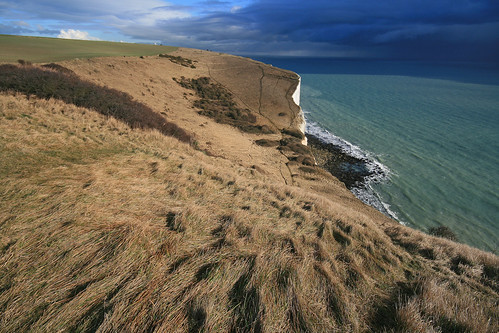
Another fine, fine day

No comments:
Post a Comment